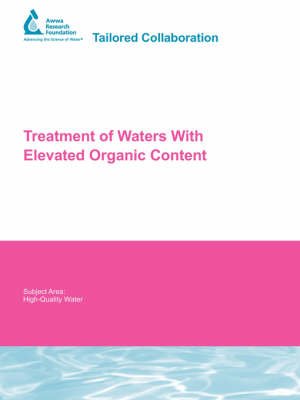Water Research Foundation Report
2 total works
Treatment of Waters With Elevated Organic Content
by Simon Parsons, Bruce Jefferson, P. Jarvis, E. Sharp, D Dixon, B. Bolto, and P. Scales
Published 26 September 2007
Water utilities in the United Kingdom and the United States are faced with problems associated with treating waters with elevated dissolved organic carbon (DOC) and color levels. These periods of increased organic loading can lead to a number of operational problems due to the difficulty in treating these waters. Therefore, there is a need to investigate the impact of elevated organic content waters on conventional and alternative treatment processes, to understand why weak flocs are formed, and to assess the impact of floc strength on downstream clarification processes.
This project is expected to provide water utilities faced with the significant problem of treating organic rich water with the tools necessary to effectively treat this type of water. This can be achieved by considering water monitoring, optimizing coagulation processes, implementing alternative treatment strategies, and determining NOM floc structural properties. The included operational checklists provide simple guidelines for utilities to follow so that they may be able to achieve low organic residuals and optimum floc properties for downstream removal processes.
This project is expected to provide water utilities faced with the significant problem of treating organic rich water with the tools necessary to effectively treat this type of water. This can be achieved by considering water monitoring, optimizing coagulation processes, implementing alternative treatment strategies, and determining NOM floc structural properties. The included operational checklists provide simple guidelines for utilities to follow so that they may be able to achieve low organic residuals and optimum floc properties for downstream removal processes.
Reactions of Polyelectrolytes With Other Water Treatment Chemicals
by A. Levine, B. Bolto, and D Dixon
Published 31 July 2005
Polyelectrolytes are used in water treatment systems for a variety of applications including coagulation, flocculation, ballasted sedimentation, filtration, dissolved air flotation, and sludge conditioning. There are multiple advantages to using polyelectrolytes including more efficient removal of particles, organics, and color; reduced sludge formation; sludge conditioning; and reduced reliance on metal salts. This project was developed to determine the degree to which organic polyelectrolytes react with other chemicals used in water treatment applications. The objectives of this project were to: evaluate current patterns of chemical use for drinking water production; conduct bench-scale testing to evaluate polyelectrolyte interactions and the impacts of these interactions on process performance, water quality, and operations; assess the degree to which exposure to ultraviolet light impacts polyelectrolyte reactions with oxidants; and assess the effect of precoating filter media with various polyelectrolytes on filtration efficiency and filter backwashing effectiveness. The research approach included an Internet survey, development of direct and indirect characterization methods to assess polyelectrolyte activity, bench-scale testing of polyelectrolyte interactions with other chemicals, and pilot-scale testing. Screening tools included organic carbon oxidation, absorption spectra, and reactions with oxidants. Performance measures for polymer effectiveness included tests of particle size, filtration rate, and residual turbidity. Disinfection by-product formation potentials were also used to compare the relative degree of oxidation that occurs for individual polyelectrolytes. Pilot-scale tests were conducted to evaluate the effects of precoating filter media with polyelectrolytes on filter run times and filter ripening. A fluorescently labeled version of one of the polyelectrolytes was used to determine the fate of the polyelectrolytes through water treatment systems. Originally published by AwwaRF for its subscribers in 2004.

